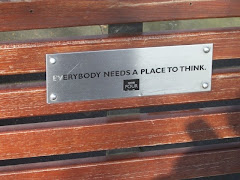Before I left for Kabul, all my impressions of Afghanistan came from the news, and all of them were negative. Most news coming out of Afghanistan is about the ongoing war or terror attacks, such as the double bombings of a guesthouse and hotel two days before I was due to leave for Afghanistan (ultimately one person signed up for the trip ended up canceling after news of this attack reached us).
I'll admit, this bombing coming so soon before I was to leave and targeting a guesthouse very similar to the one I would be staying at in Kabul did cause me to stop and reconsider my options, but eventually I decided that what I stood to gain outweighed any possible risk. I left home and headed to Kabul as scheduled; now looking back I am more convinced than ever that I made the right decision.
I met up with the rest of my group in Dubai, and we finally arrived in Kabul after more than two grueling days of nonstop travel. There were twelve of us in all, ranging in age from 25 to 77 and in careers from botany to law. We had all come to Kabul for different reasons, but once there we were united by the unique experience of being strangers in a strange land.
Our welcome to this peculiar new world came when we stepped off the plane to go through customs and all the women donned headscarves before we even caught a glimpse of the city we would call home for the next ten days.
That headscarf quickly became the bane of my existence, as I quickly proved incapable of keeping it on. There is an art to it that Muslim women must spend their entire lives perfecting. I spent the first few days constantly rearranging it, pulling it back up as it slipped off, trying different ways of draping it, and eventually just holding it up. About halfway through the trip, however, I started to figure out some of the tricks to keeping the scarf up over my head, as well as a better way of wearing it. And by the time I left I had become so accustomed to wearing a headscarf that I would catch myself starting to slip it over my head every time I headed outside for several weeks after returning home.
Most Westerners see headscarves as a symbol of the oppression of women, forced on them by a heavily patriarchal conservative Muslim culture, but I think that there is much more to the issue than simply this. It might be naïve of me, but one thing I noticed is that in Kabul at least, a headscarf has many practical applications. There were times that I was actually grateful to have it on—and it also wasn't uncommon to see men on the street wearing a scarf draped around their head as well. Part of the reason for this is because Kabul is infamously dusty and polluted, and often both men and women on the street would be walking with their scarf held over their nose and mouth. By the time we left, the dust was getting to me and I unconsciously found myself doing this as well.
Learning the unfamiliar art of the headscarf would be just the first of many new and unusual experiences waiting for me in this vibrant and chaotic city, and each served as a reminder to me that other ways of living are merely different, not necessarily better or worse.











No comments:
Post a Comment